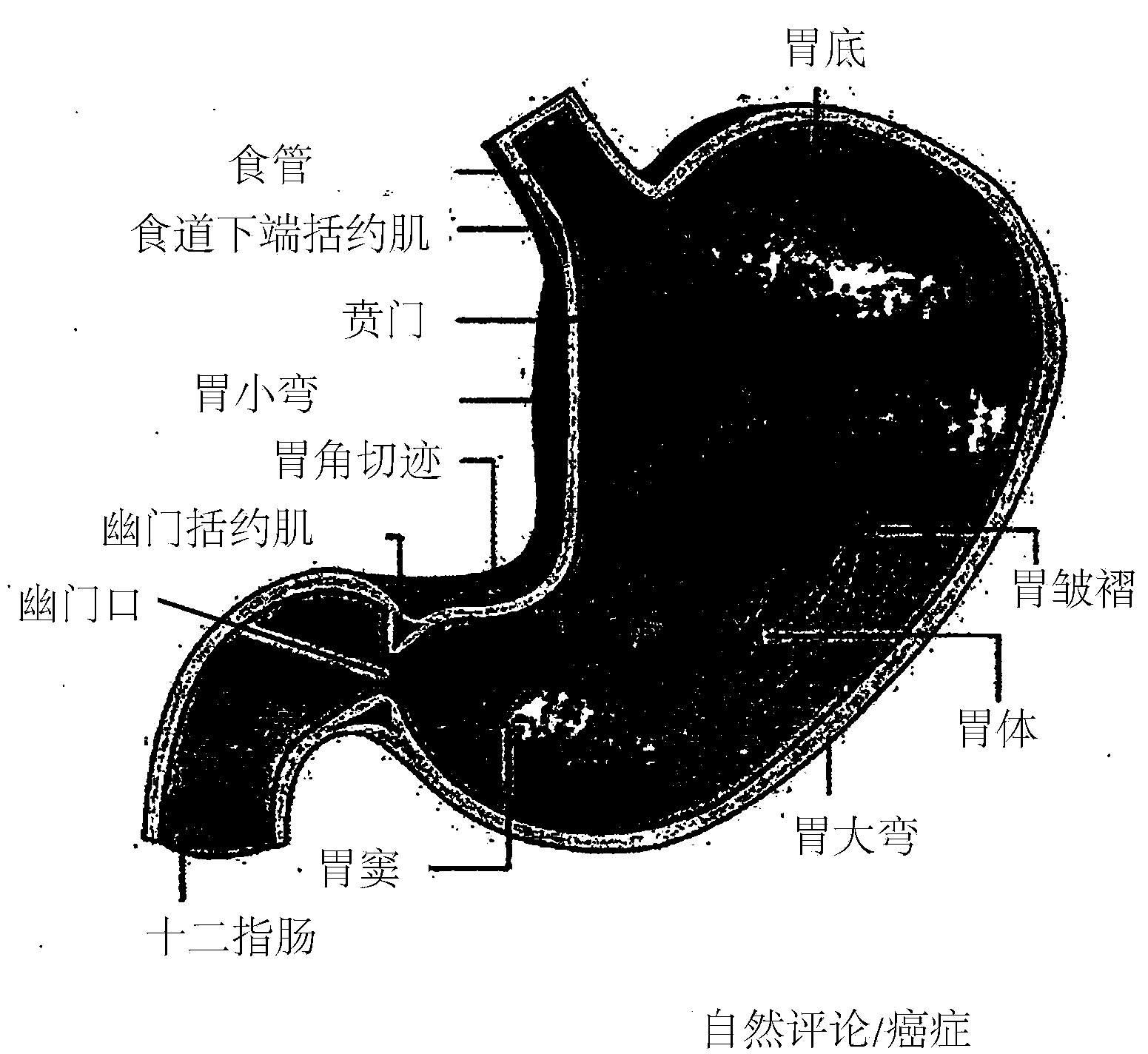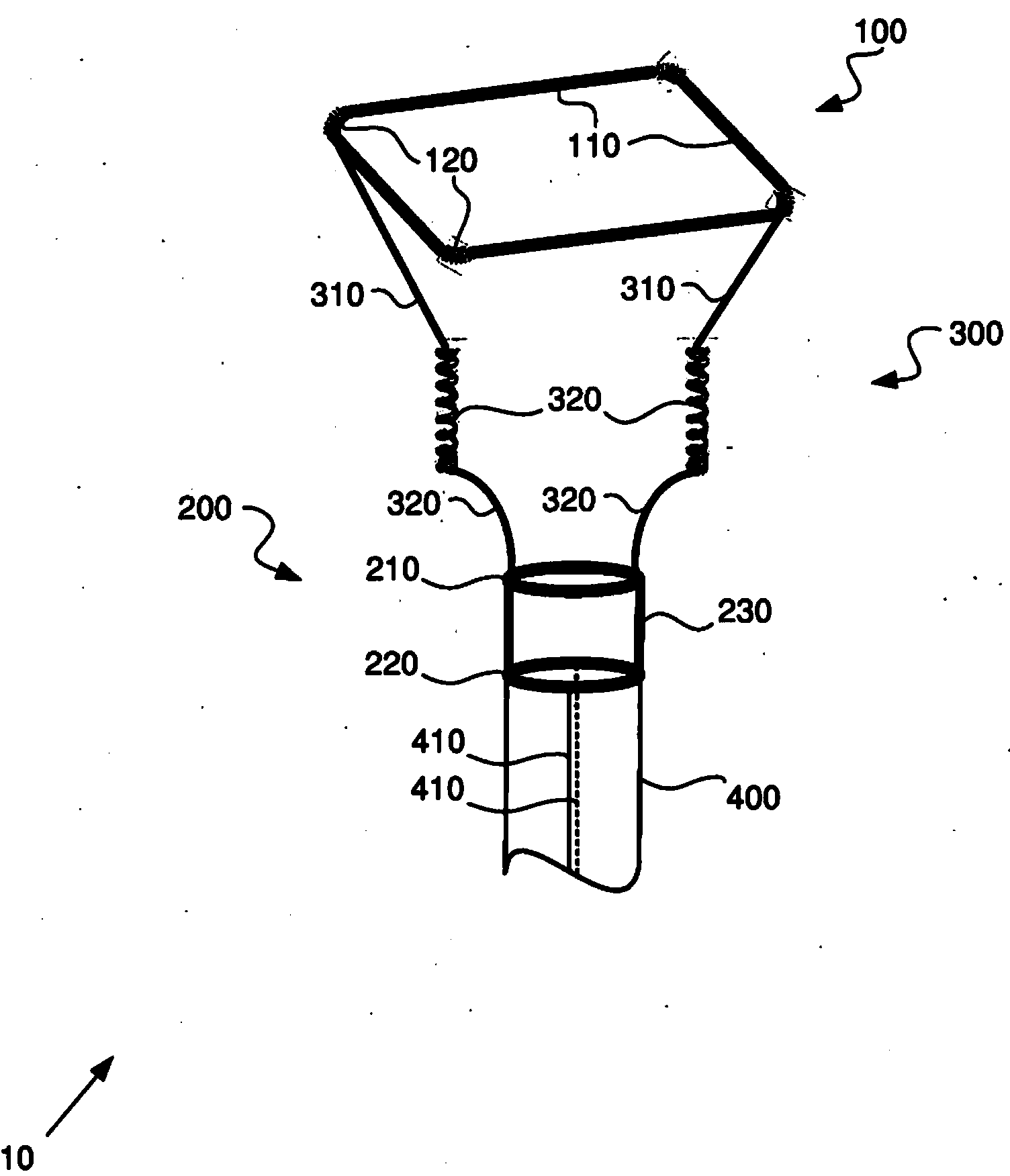Anchoring and delivery system for a gastro-duodenal implant
A duodenal implant technology, applied in the field of implantable medical devices, can solve problems that hinder the insertion, deployment, and reliable maintenance of duodenal inserts.
- Summary
- Abstract
- Description
- Claims
- Application Information
AI Technical Summary
Problems solved by technology
Method used
Image
Examples
Embodiment approach
[0048] Embodiments of the present invention relate to substantially or substantially atraumatic gastroduodenal implants that can be placed along or at a desired portion of the gastrointestinal tract relative to the pyloric orifice and / or pyloric sphincter. A portion is securely held, maintained, or anchored. Various embodiments of gastroduodenal implants according to the invention include the following:
[0049] (1) A gastric resident primary retention structure having a set of structural features, segments, or a component, and its spatial extent or cross-sectional area significantly exceeds the maximum or expected maximum cross-sectional area of each of the pyloric orifice and cardia antrum, so as to reduce or allow a substantial or significant portion of the first retention structure to be blocked by the pyloric sphincter or The possibility of esophageal accommodation is minimized;
[0050] (2) a second retention structure comprising one or more components configured to ...
example 1
[0089] A specific embodiment of the gastroduodenal implant according to the invention is implanted in a pig. The weight of implanted pigs is tabulated for control pigs of the same sex and starting weight but without implants versus implanted pigs. Over the course of 60 days, the rate of weight gain of implanted pigs was significantly less than that of control pigs.
[0090]
PUM
| Property | Measurement | Unit |
|---|---|---|
| Total length | aaaaa | aaaaa |
| Diameter | aaaaa | aaaaa |
| Length | aaaaa | aaaaa |
Abstract
Description
Claims
Application Information
 Login to view more
Login to view more - R&D Engineer
- R&D Manager
- IP Professional
- Industry Leading Data Capabilities
- Powerful AI technology
- Patent DNA Extraction
Browse by: Latest US Patents, China's latest patents, Technical Efficacy Thesaurus, Application Domain, Technology Topic.
© 2024 PatSnap. All rights reserved.Legal|Privacy policy|Modern Slavery Act Transparency Statement|Sitemap



